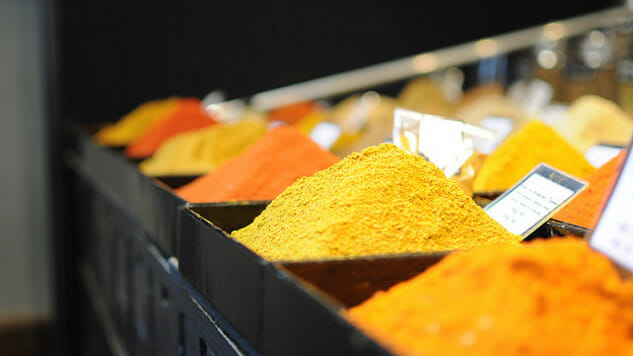8 Crush-Worthy Global Seasoning Blends to Try

If you grew up in a home where dry condiments were limited to a neglected shaker of Mrs. Dash and lemon pepper was a hot gourmet item, your spice universe has likely expanded greatly since then.
Spice blends are also a fun way to enliven the boring routine of meals, or to dress up reconfigured leftovers. I seem to burn though them in crush-like cycles: the energizing first encounter, the subsequent impulse to use it on or in everything, and then the inevitable burn-out. The good news is there’s always a different spice blend waiting in the wings to discover next. You can think of such spice sampling as a frivolous desire for day-tripping exoticism, or as a small opportunity to gain a greater understanding of different cultures via food and flavor.
If you’re an ambitious sort of person, hit up the bulk spice section of a natural foods store or international market. That’s where you’ll find the freshest herbs and spices and the lowest prices. You can buy either ready-made blends or individual spices to make your own versions at home for optimal flavor.
But if you’d like to just try out a spice blend, buy a small amount from a store that specializes in spices. Penzey’s and The Spice House are two favorites where you can typically find 1-ounce jars of most everything under the sun.
Furikake
Made primarily from sesame seeds and flakes of dried nori, furikake is a Japanese condiment that offers a light-handed hit of umami and nuttiness with hints of salt and sweetness.
Purchased furikake can vary greatly; some has dried bonito flakes, some has tiny balls of crispy rice, and some even has minute Hello Kitty heads in there, like a savory version of cake sprinkles. If you go to an Asian market, you’ll likely see a dizzying array; just as there are many kinds of little black dresses, there are many furikakes, and that’s why I know people who maintain a furikake wardrobe to deploy depending on what they are eating at the moment.
But in general, furikake is best on starchy things (think sushi rice or ramen), steamed fish, or crunchy things (think popcorn). I also love it on sunny-side-up eggs, cheese pizza, and boxed macaroni and cheese.
A lot of commercial furikake contains MSG, so if that’s not your scene, consider making your own.
Za’atar
Sour from dried sumac berries, za’atar is popular throughout the Middle East. Formulas vary from region to region; some blends include dried herbs such as thyme, oregano, and hyssop. Like furikake, it includes sesame seeds, but it’s much more robust in flavor. You’ll see it baked onto savory flatbreads or sprinkled over dips—hummus and labneh are great with it.
My favorite way to enjoy za’atar is to season potatoes (toss cubed potatoes with olive oil, za’atar, and tons of salt prior to roasting), but it’s great on French fries, too.
Berbere
To get a sense of how integral berbere is to Ethiopian cuisine, look at the cover of chef Marcus Samuelsson’s memoir, Yes, Chef. The title of the book is spelled out traces in berbere, the signature spice mixture of Ethiopia, where Samuelsson was born. “It is the salt and pepper of Ethiopia; you taste it in snacks, in bread, in spiced butter and cheese and of course over fish and meat,” Samuelsson said in an interview with KQED.
-

-

-

-

-

-

-

-

-

-

-

-

-

-

-

-

-

-

-

-

-

-

-

-

-

-

-

-

-

-

-

-

-

-

-

-

-

-

-

-








































